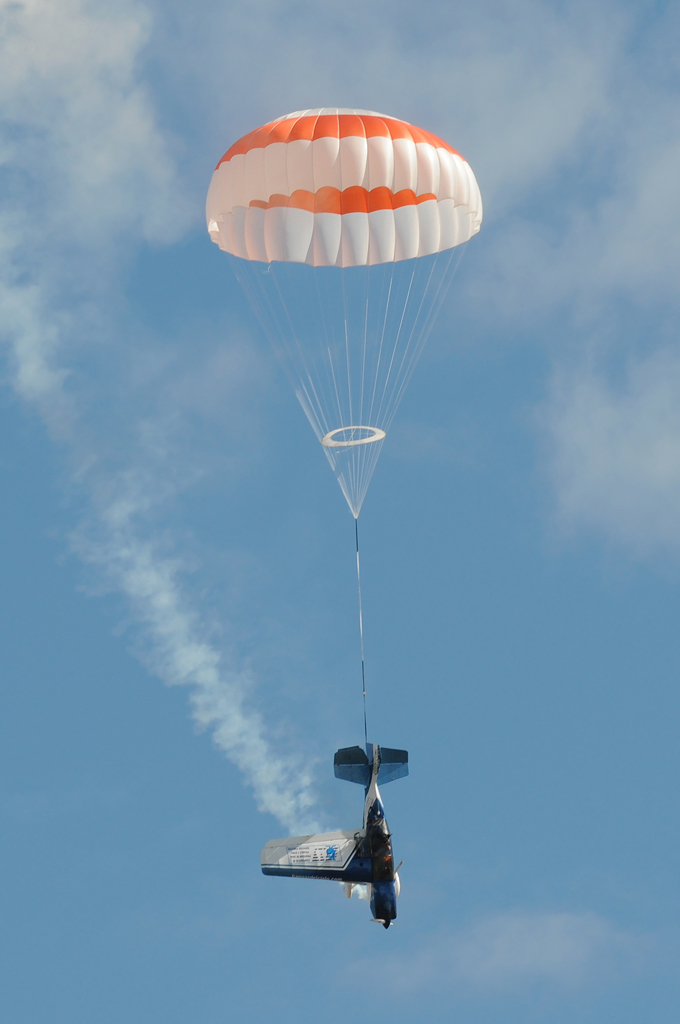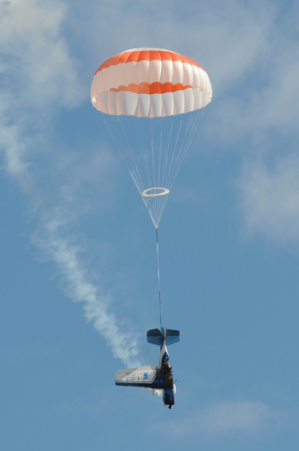Since 1993, Popov's organization has been giving general aeronautics and a couple of airplane legacy producers with alternatives for airframe parachutes. BRS takes note of that FAA-ensured tests have demonstrated that full parachute swelling could happen at heights as low as 260 feet and, so far, notes that airplane utilizing his framework have spared well more than three hundred lives.
The key to our framework, says Popov, is that it opens momentarily. BRS rocket-moved parachutes convey from the back of the flying machine and quicken to 100 mph. In under a second, they give a shelter that extends firmly over the airframe. Once the flying machine is stable it drops at a rate of exactly 21 feet-every second that enables it to touchdown with an effective power much the same as jumping to the ground from around seven feet.
Cirrus and Flight Design as of now have BRS items as standard hardware and Popov says Cessna has made it a choice on two of its displays. He says his organization has likewise tried frameworks equipped for sending parachute frameworks that can securely cut down 12 traveler suburbanite flying machine.
Concerning expenses?
“If our parachute tech exceeds 15 percent of the airplane’s value, then buyers start to back off very quickly,” said Popov. Yet is the tech accessible to prepare substantial Airbus- or Boeing BA +0.46%-fabricated turbofan "jet" air ship flying at high elevation with voyage velocities pushing that of sound? “It basically requires a square foot of material to bring down one pound of aircraft,” said Popov. “For a 500,000-pound Boeing 757, you’ll need half a million square feet of parachute cloth.”
One of the greatest obstacles in utilizing such a framework for commercial aircrafts is cutting down the heaviness of the parachute enough to make it monetarily possible. Use on bigger airplane, says Popov, will probably need to hold up until nanotechnologies can create fake synthetic silks that are ten times stronger than steel and one tenth the heaviness of ripstock nylon.
Popov clarifies that the quick next period of the innovation rests in GPS-coordinated, steerable parachutes that can consequently direct a feeble aircraft far from ground dangers.
“Smart chutes would steer the disabled aircraft to an optimum landing area controlled by GPS-directed steering inputs,” said Popov. “[This has] already done this with cargo delivery parachutes for various military applications.”
Shouldn't we think about the open ocean?
For aircrafts in cruise mode at high elevations, Popov proposes “smart chutes” that at first just open at 20 percent of their full opening and stay in that arrangement until the velocity moderates enough so that the chute can open without destroying or tearing far from the aircraft.
Shouldn't something be said about innovation that would empower parachutes to convey in occurrences of treachery or commandeering?
We've had numerous inner exchanges about creating complex calculations that would sense when an airplane was gravely off base, approaching landscape, over or under pace, or when the flight deck was not imparting regularly. On the off chance that effect was approaching, he says, these security calculations would then trigger the automatic deployment of airframe parachutes.
Reference:
http://www.forbes.com/sites/brucedorminey/2015/03/28/time-for-jetliners-equipped-with-airframe-parachutes/
The key to our framework, says Popov, is that it opens momentarily. BRS rocket-moved parachutes convey from the back of the flying machine and quicken to 100 mph. In under a second, they give a shelter that extends firmly over the airframe. Once the flying machine is stable it drops at a rate of exactly 21 feet-every second that enables it to touchdown with an effective power much the same as jumping to the ground from around seven feet.
Cirrus and Flight Design as of now have BRS items as standard hardware and Popov says Cessna has made it a choice on two of its displays. He says his organization has likewise tried frameworks equipped for sending parachute frameworks that can securely cut down 12 traveler suburbanite flying machine.
Concerning expenses?
“If our parachute tech exceeds 15 percent of the airplane’s value, then buyers start to back off very quickly,” said Popov. Yet is the tech accessible to prepare substantial Airbus- or Boeing BA +0.46%-fabricated turbofan "jet" air ship flying at high elevation with voyage velocities pushing that of sound? “It basically requires a square foot of material to bring down one pound of aircraft,” said Popov. “For a 500,000-pound Boeing 757, you’ll need half a million square feet of parachute cloth.”
One of the greatest obstacles in utilizing such a framework for commercial aircrafts is cutting down the heaviness of the parachute enough to make it monetarily possible. Use on bigger airplane, says Popov, will probably need to hold up until nanotechnologies can create fake synthetic silks that are ten times stronger than steel and one tenth the heaviness of ripstock nylon.
Popov clarifies that the quick next period of the innovation rests in GPS-coordinated, steerable parachutes that can consequently direct a feeble aircraft far from ground dangers.
“Smart chutes would steer the disabled aircraft to an optimum landing area controlled by GPS-directed steering inputs,” said Popov. “[This has] already done this with cargo delivery parachutes for various military applications.”
Shouldn't we think about the open ocean?
For aircrafts in cruise mode at high elevations, Popov proposes “smart chutes” that at first just open at 20 percent of their full opening and stay in that arrangement until the velocity moderates enough so that the chute can open without destroying or tearing far from the aircraft.
Shouldn't something be said about innovation that would empower parachutes to convey in occurrences of treachery or commandeering?
We've had numerous inner exchanges about creating complex calculations that would sense when an airplane was gravely off base, approaching landscape, over or under pace, or when the flight deck was not imparting regularly. On the off chance that effect was approaching, he says, these security calculations would then trigger the automatic deployment of airframe parachutes.
Reference:
http://www.forbes.com/sites/brucedorminey/2015/03/28/time-for-jetliners-equipped-with-airframe-parachutes/


 Jetliners Set To Be Equipped With Next Gen Parachutes
Jetliners Set To Be Equipped With Next Gen Parachutes





 Companies
Companies